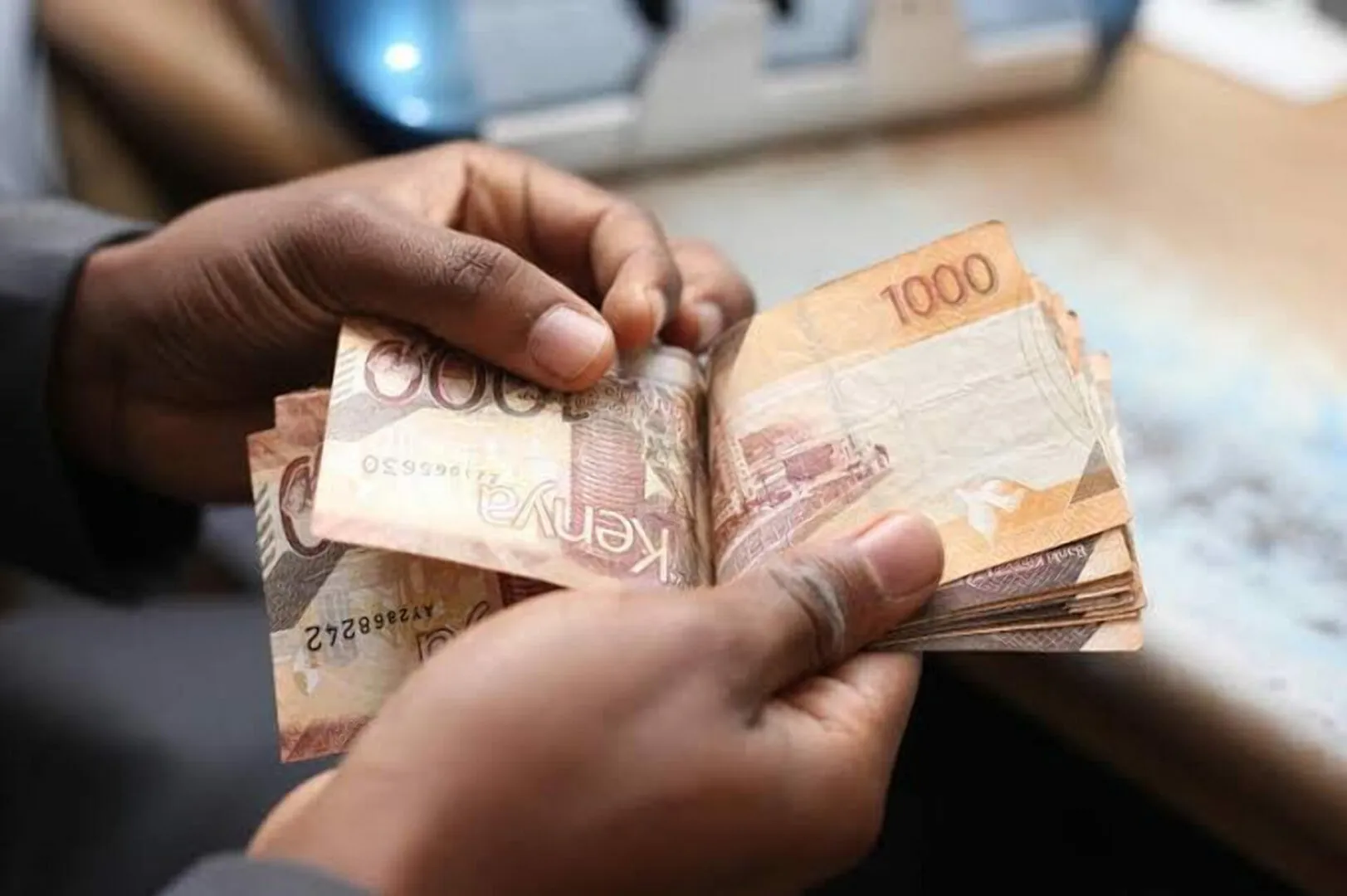By the end of June 2025, the Kenyan government had mobilized KSh 853.4 billion from local sources—exceeding its original target of KSh 825.8 billion. The bulk of this financing came from non-bank financial institutions (pension funds, insurance companies, SACCOs), contributing KSh 483.9 billion, while commercial banks lent KSh 368.2 billion via Treasury bills and bonds. Smaller amounts—KSh 24.8 billion from government deposits and KSh 1.9 billion from loan repayments—made up the remainder.
Build the future you deserve. Get started with our top-tier Online courses: ACCA, HESI A2, ATI TEAS 7, HESI EXIT, NCLEX-RN, NCLEX-PN, and Financial Literacy. Let Serrari Ed guide your path to success. Enroll today.
This aggressive domestic borrowing formed part of a broader government financing mix. The net financing requirement for FY 2024/25 stood at KSh 1.03 trillion (about 5.9 percent of GDP), slightly above its target of KSh 1.01 trillion (5.8 percent of GDP). To meet that gap, the government combined KSh 178.9 billion in net external borrowing with KSh 853.4 billion in domestic borrowing.
The decision to revise the domestic borrowing target upward was necessitated by revenue shortfalls and underperformance in external financing. To maintain fiscal discipline, the Treasury emphasized lower interest rates and improved domestic market liquidity.
Context: Debt Levels, Trends & Risks
Rising Domestic Debt & Servicing Costs
Kenya’s tilt toward domestic financing has deep implications:
- In FY 2024/25, domestic debt servicing crossed KSh 1 trillion for the first time, rising to KSh 1.05 trillion—a 25.9 percent increase from the previous year. Interest payments accounted for KSh 678.3 billion, while principal repayments added KSh 366.8 billion. This places significant pressure on fiscal space.
(Source: Kenyan Wall Street) - As of June 2025, domestic debt made up more than half of Kenya’s total public debt. Over the prior year, domestic debt climbed by ~16.6 percent, reaching KSh 6.2 trillion, while external debt grew more modestly to KSh 5.3 trillion. (Source: Cytonn)
- The shift toward short-term instruments (Treasury bills) increases refinancing risk and exposes the government to volatile interest rate environments. (Source: National Treasury’s Medium-Term Debt Management Strategy)
These trends raise red flags: greater domestic debt implies heavier interest obligations, more crowding out of private credit, and vulnerability to shifts in investor sentiment.
Debt Composition & Strategy
According to Kenya’s Medium-Term Debt Management Strategy (MTDS):
- As of June 2024, Treasury bonds represented 85.5 percent of domestic debt, while Treasury bills accounted for 11.4 percent.
- The government plans to gradually reduce reliance on short-term instruments in favor of longer-duration bonds to smooth maturities and reduce rollover risk.
- External debt, meanwhile, is mainly composed of multilateral and bilateral commitments, with commercial borrowing used more sparingly to manage cost and risk. (Treasury / MTDS document)
Thus, while the recent borrowing surge leans heavily on local markets, Kenya is signaling intent to manage the maturity profile and cost structure over time.
Projections & Upcoming Borrowing Plan for FY 2025/26
Looking ahead, the government estimates it will need KSh 1.55 trillion to finance operations and refinance maturing obligations in FY 2025/26. Of that, KSh 901 billion is earmarked for the fiscal deficit, and KSh 646.3 billion will refinance maturing domestic and external debt.
In terms of sources:
- Net domestic borrowing is projected at KSh 635.5 billion, representing ~68.8 percent of total financing. (KPMG / budget brief)
- Net external borrowing is expected at KSh 287.7 billion, ~31.2 percent of the total. (KPMG)
- The total financing requirement for the year is KSh 923.2 billion, with domestic and external components as noted. (Cytonn)
These forecasts align with the government’s efforts to narrow the fiscal deficit: from 5.7 percent in FY 2024/25 to 4.8 percent of GDP in FY 2025/26. (Reuters)
However, there is variation among projections: some sources suggest the deficit could tighten further to 4.3 percent of GDP, with net external financing of KSh 146.8 billion and net domestic of KSh 684.2 billion. (Reuters)
Regardless, the emphasis remains clear: Kenya will continue to lean heavily on domestic markets for funding.
Implications & Risks
Rising Debt Servicing Burden
With rising borrowing, interest payments alone are consuming an increasingly large share of the budget. If domestic debt servicing already breached KSh 1 trillion in FY 2024/25, it is likely to rise in FY 2025/26—even before considering principal amortization.
That pressure reduces fiscal space for development, social spending, and infrastructure investment.
Crowd Out Private Sector
As the government absorbs more capital in local markets, private credit growth may suffer. Already, the World Bank has flagged that high domestic borrowing, paired with elevated interest rates, is crowding out private sector activity. (World Bank)
Indeed, credit growth was reported negative in December 2024, down from strong expansion a year earlier—raising alarms about the long-term viability of Kenya’s private-sector-led growth model.
One decision can change your entire career. Take that step with our Online courses in ACCA, HESI A2, ATI TEAS 7, HESI EXIT, NCLEX-RN, NCLEX-PN, and Financial Literacy. Join Serrari Ed and start building your brighter future today.
Refinancing & Interest Rate Vulnerabilities
Short-maturity debt, such as Treasury bills, requires frequent rollover. If investor confidence wanes or rates rise sharply, rollover becomes costlier or more difficult. The MTDS notes this as a key vulnerability. (Treasury MTDS)
Moreover, if inflation or global interest rates spike, Kenya may struggle to honor rising coupon payments on floating-rate securities.
Exchange Rate & External Shocks
Even though Kenya’s external borrowing is lower relative to domestic debt, exchange rate depreciation remains a risk. A weaker shilling can inflate the local-currency value of foreign debt, adding stress to debt servicing budgets.
Recently, Fitch projected Kenya’s foreign exchange reserves might fall to USD 10.2 billion by end-2025, covering ~3.8 months of external payments, elevating external liquidity risk. (Fitch)
Reliance on Domestic Investor Base
The heavy dependence on non-bank financial institution (NBFI) funding—especially pension funds and insurers—is a double-edged sword. While these investors provide stability, any loss of confidence, regulatory shift, or mismatch in asset-liability expectations could threaten appetite for government paper.
Recent Developments That Matter
IMF Engagement & Support Potential
Kenya is expecting a visit from an IMF staff team between September 25 and October 9, 2025, to discuss potential programme support to help stabilize macro fundamentals and manage debt pressures. (Reuters)
This could unlock conditional funding or backstop support, easing external financing pressure, but it often comes with fiscal consolidation demands.
Samurai Financing from Japan
As part of efforts to diversify funding, Kenya secured USD 169 million (~25 billion yen) in Samurai financing from Japan. This deal is intended to support the vehicle assembly and energy sectors, partly to reduce reliance on expensive domestic funding. (Reuters)
While relatively small in scale, such instruments illustrate Kenya’s push to tap alternative funding sources beyond conventional domestic and multilateral channels.
Revision of Growth Forecasts & Fiscal Tightening
A downward revision by the World Bank lowered Kenya’s growth forecast to 4.5 percent in 2025, citing debt strain, high interest rates, and crowding out. (Reuters)
The government, in response to public backlash against prior tax proposals, has opted to cap its fiscal deficit at 4.5 percent of GDP for FY 2025/26—signaling tighter expenditure control. (Reuters)
These choices may calm investor nerves, but they also constrain developmental ambitions.
What to Watch: Key Indicators & Turning Points
- Domestic debt servicing trajectory
Will servicing cross KSh 1.3 trillion in FY 2025/26? That level would stress any budget. - Investor demand for government paper
Continued strong uptake from pension funds and insurers will be essential to avoid yield spikes. - Fiscal discipline & budget execution
The government must adhere to caps, control deficits, and rationalize spending. - IMF programme negotiation outcomes
Conditional funding and structural reform requirements may shape Kenya’s macro path. - Exchange rate & external reserve health
Maintaining shilling stability and reserve buffers is critical to limit external debt shock. - Private credit trends
Will credit growth rebound, or continue to lag due to crowding out? - Alternative financing channels
Issuance via Samurai, Panda, domestic infrastructure bonds, or debt swaps could ease local market pressure.
In Summary
Kenya’s mobilization of KSh 853.4 billion in domestic borrowing by June 2025 reflects both necessity and policy direction. In the face of revenue shortfalls and constrained external access, the government has leaned heavily on local markets to fund its deficit and roll over debt.
But this shift carries significant risks: rising debt servicing burdens, crowding out of private lending, increased refinancing vulnerability, and sensitivity to investor confidence. Kenya’s fiscal gamble hinges on sustaining demand for its debt, maintaining macro stability, and managing the delicate balance between growth and consolidation.
The coming months will be critical: will Kenya’s domestic investor base hold firm? Can fiscal discipline, IMF negotiation, and external support soften the stress? Or will pressure on debt servicing and private sector credit clip Kenya’s growth trajectory?
Ready to take your career to the next level? Join our Online courses: ACCA, HESI A2, ATI TEAS 7 , HESI EXIT , NCLEX – RN and NCLEX – PN, Financial Literacy!🌟 Dive into a world of opportunities and empower yourself for success. Explore more at Serrari Ed and start your exciting journey today! ✨
Track GDP, Inflation and Central Bank rates for top African markets with Serrari’s comparator tool.
See today’s Treasury bonds and Money market funds movement across financial service providers in Kenya, using Serrari’s comparator tools.
Photo source: Google
By: Montel Kamau
Serrari Financial Analyst
24th September, 2025
Article, Financial and News Disclaimer
The Value of a Financial Advisor
While this article offers valuable insights, it is essential to recognize that personal finance can be highly complex and unique to each individual. A financial advisor provides professional expertise and personalized guidance to help you make well-informed decisions tailored to your specific circumstances and goals.
Beyond offering knowledge, a financial advisor serves as a trusted partner to help you stay disciplined, avoid common pitfalls, and remain focused on your long-term objectives. Their perspective and experience can complement your own efforts, enhancing your financial well-being and ensuring a more confident approach to managing your finances.
Disclaimer: This article is for informational purposes only and does not constitute financial advice. Readers are encouraged to consult a licensed financial advisor to obtain guidance specific to their financial situation.
Article and News Disclaimer
The information provided on www.serrarigroup.com is for general informational purposes only. While we strive to keep the information up to date and accurate, we make no representations or warranties of any kind, express or implied, about the completeness, accuracy, reliability, suitability, or availability with respect to the website or the information, products, services, or related graphics contained on the website for any purpose. Any reliance you place on such information is therefore strictly at your own risk.
www.serrarigroup.com is not responsible for any errors or omissions, or for the results obtained from the use of this information. All information on the website is provided on an as-is basis, with no guarantee of completeness, accuracy, timeliness, or of the results obtained from the use of this information, and without warranty of any kind, express or implied, including but not limited to warranties of performance, merchantability, and fitness for a particular purpose.
In no event will www.serrarigroup.com be liable to you or anyone else for any decision made or action taken in reliance on the information provided on the website or for any consequential, special, or similar damages, even if advised of the possibility of such damages.
The articles, news, and information presented on www.serrarigroup.com reflect the opinions of the respective authors and contributors and do not necessarily represent the views of the website or its management. Any views or opinions expressed are solely those of the individual authors and do not represent the website's views or opinions as a whole.
The content on www.serrarigroup.com may include links to external websites, which are provided for convenience and informational purposes only. We have no control over the nature, content, and availability of those sites. The inclusion of any links does not necessarily imply a recommendation or endorsement of the views expressed within them.
Every effort is made to keep the website up and running smoothly. However, www.serrarigroup.com takes no responsibility for, and will not be liable for, the website being temporarily unavailable due to technical issues beyond our control.
Please note that laws, regulations, and information can change rapidly, and we advise you to conduct further research and seek professional advice when necessary.
By using www.serrarigroup.com, you agree to this disclaimer and its terms. If you do not agree with this disclaimer, please do not use the website.
www.serrarigroup.com, reserves the right to update, modify, or remove any part of this disclaimer without prior notice. It is your responsibility to review this disclaimer periodically for changes.
Serrari Group 2025












